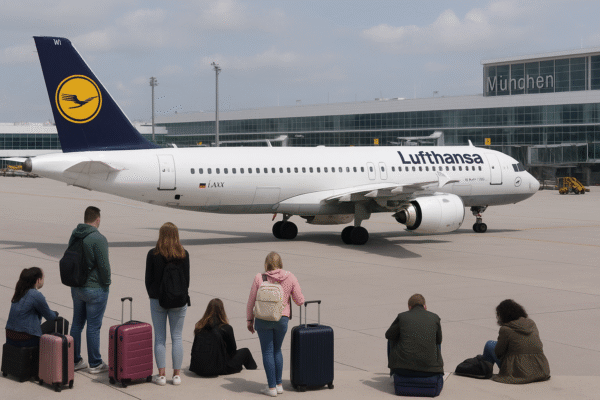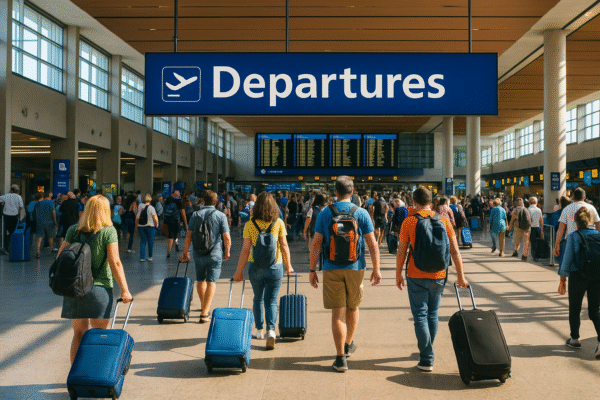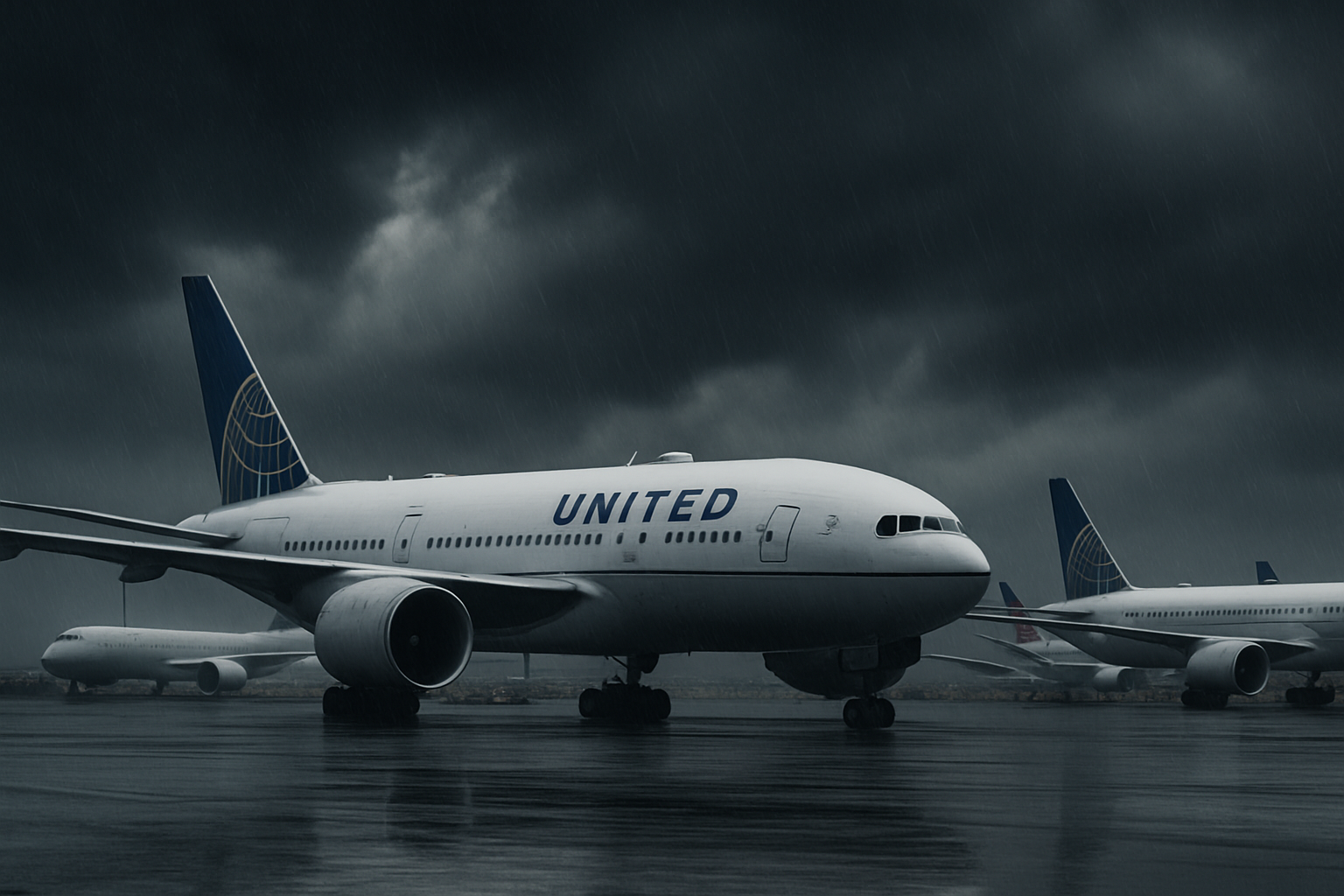United Airlines is battling one of its toughest operational challenges in recent months as severe storms sweep across North America and parts of Europe. Major hubs including Chicago O’Hare International Airport, Newark Liberty International, San Francisco International, LaGuardia, Washington Dulles, and Frankfurt International Airport have been heavily disrupted by the extreme conditions.
The storm system, fueled by thunderstorms, high winds, and reduced visibility, has triggered dozens of cancellations and long delays, forcing the airline into crisis mode. For travelers, the impact has been immediate: long queues at check-in counters, anxious crowds monitoring departure boards, and growing frustration over shifting flight schedules.
Scale of Disruptions
As of the latest updates, United Airlines canceled 38 flights and delayed 48 more, accounting for about 1% of its global schedule. The brunt of the cancellations hit its U.S. hubs, particularly Chicago O’Hare, where thunderstorms combined with strong winds made flight operations unsafe. Newark Liberty and San Francisco International also saw multiple cancellations as poor visibility and severe weather conditions intensified.
In the New York area, LaGuardia Airport was badly affected, with flights grounded for safety reasons. At Washington Dulles International, high winds and heavy rain slowed takeoffs and landings, creating ripple effects across United’s domestic network.
On the international front, Frankfurt International Airport, a critical hub for United’s transatlantic operations, experienced multiple cancellations. Flights connecting to London, Frankfurt, and other European cities were disrupted, leaving thousands of international passengers stranded.
Why the Weather Caused Major Chaos
The storm system that hit United Airlines’ network is part of a larger weather front moving across the U.S. Northeast and stretching into Europe. Conditions included:
- Thunderstorms at Chicago O’Hare and Newark, grounding flights due to lightning and low visibility.
- Fog in San Francisco and Frankfurt, reducing runway visibility and delaying arrivals and departures.
- High winds at LaGuardia and Washington Dulles, making it unsafe for planes to land or take off.
Air traffic control struggled to keep pace with the fast-changing conditions, which worsened congestion at already busy airports. For an airline as reliant on its hub system as United, even small disruptions quickly cascaded into major delays.
United Airlines’ Response
United Airlines issued an official statement apologizing to passengers and urging them to check their flight status before traveling to the airport. The airline rolled out several measures to support stranded passengers:
- Rebooking options with waived change fees.
- Accommodation assistance for overnight delays.
- Meal vouchers and travel credits for those affected by significant disruptions.
- Guidance through the United Airlines mobile app and website, enabling passengers to track flights and reschedule more efficiently.
Despite these steps, travelers voiced frustration on social media, complaining about long wait times at customer service counters and lack of timely updates. The sheer scale of disruptions has made it difficult for the airline to handle passenger needs promptly.
Impact on Domestic and International Travel
The cancellations extended well beyond domestic routes. Flights connecting Chicago, Newark, and Washington Dulles to Europe—including Frankfurt, London, and Paris—were disrupted. Travelers with tight connections faced uncertainty, with many stranded overnight or forced to rebook for later days.
For passengers in Frankfurt, delays cascaded into connecting flights bound for North America. Families, business travelers, and tourists alike expressed frustration at the lack of alternatives as limited seats quickly filled up.
The Bigger Picture for Travelers
Bad weather is a recurring challenge for global aviation, but when it affects multiple hubs simultaneously, as in this case, the consequences multiply. For travelers, the lessons are clear:
- Always monitor flight status in real time via airline apps.
- Secure travel insurance that covers weather-related cancellations.
- Plan extra time for connections when traveling through weather-prone hubs like Chicago or Newark.
- Prepare for delays with essentials like snacks, chargers, and overnight items in carry-on luggage.
Looking Ahead
As the storm system moves eastward, conditions are expected to improve, allowing United Airlines to gradually restore its schedule. However, recovery will take time. With thousands of travelers displaced, the backlog of rebookings could last several days.
United Airlines is working closely with airport authorities and weather monitoring agencies to minimize further disruptions. Passengers are being encouraged to remain patient, check updates frequently, and make use of online tools to rebook or adjust plans.
Conclusion
United Airlines is grappling with a severe weather crisis that has caused widespread cancellations at major airports across the U.S. and Europe. From Chicago O’Hare and Newark Liberty to San Francisco, LaGuardia, Washington Dulles, and Frankfurt International Airport, storms have disrupted schedules, stranded travelers, and tested the airline’s resilience.
While United has taken steps to rebook passengers, provide accommodation, and waive fees, the scale of the crisis highlights the vulnerabilities of air travel during extreme weather. For tourists and business travelers alike, patience and preparation are key as the airline works toward recovery.
For more travel news like this, keep reading Global Travel Wire
















